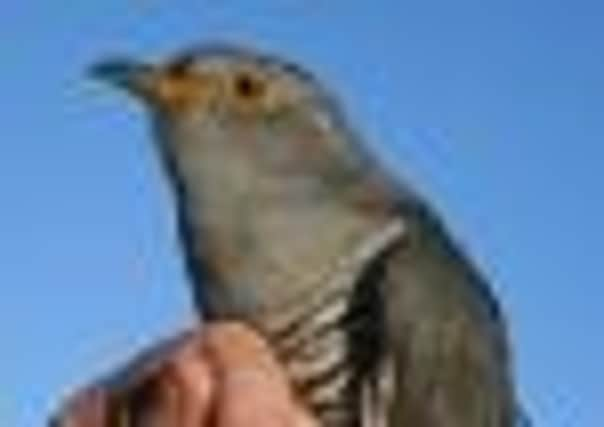Eyes of the world follow an epic journey to Africa


Their journey to Africa and back reduced the five to the “fab four”, but the information captured during their individual flights will guarantee their journeys are never forgotten.
Scientists are worried about our cuckoos, Cuculus canorus. Half of our breeding birds have been lost in the last 25 years alone and their call, a sound synonymous with spring and summer, has disappeared from large swathes of our countryside.
Advertisement
Hide AdAdvertisement
Hide AdLast May, the British Trust for Ornithology (BTO) netted five of the birds in Norfolk and fitted them with five gramme solar-powered satellite trackers which would reveal the birds’ routes, the duration of key stages of their journeys and the locations of important re-fuelling sites.
Updates of the cuckoos’ locations were revealed every few days from the transmitters and the scheme quickly began to attract interest. Each bird had a dedicated blog updated by scientists featuring the latest migration news and email updates were sent out revealing how they were faring.
Birds would disappear for days on end, leaving followers on tenterhooks, only for the individuals to turn up safe and sound hundreds of miles from where the last transmission was sent.
The project’s runaway popularity has surprised everyone involved.
Advertisement
Hide AdAdvertisement
Hide AdThe BTO’s Paul Stancliffe explains: “People have become attached to the birds, which has definitely helped with media coverage.
“We always thought that there was a lot of potential for this to be a big story but are still a little surprised just how big it has been.”
There was a setback on March 22 when news came from Cameroon that Clement, named after the BTO’s director, was dead.
But the project is already starting to unearth some surprising results. The first surprise for researchers was how early the birds left the UK last summer.
Advertisement
Hide AdAdvertisement
Hide AdThree had gone from England by the end of June and the last to leave went by July 22 – the cuckoos were only spending around a quarter of the year here.
The next surprise was how varied the cuckoos’ routes were. Lyster and Clement headed south across the Channel and then travelled down through France and Spain. In doing so they revealed a new migration route.
They then travelled on into Africa – minimising the risks of crossing the migrant death trap that is the Sahara by skirting its western edge and becoming the first British cuckoos ever recorded in West Africa.
The other three birds more typically headed down through Italy and rested in the Po Delta before heading into North Africa, crossing the continent through its centre.
Advertisement
Hide AdAdvertisement
Hide AdThey crossed the desert in the heat of the day as well as at night. During the afternoon of July 15 last year, One covered 337km of the Sahara in extreme heat.
Chris, named after BBC Springwatch presenter Chris Packham, is currently leading the way back.
Paul Stancliffe adds: “The weather in southern Europe is not too good at present and is holding up a lot of our migrants. We think that the birds will come back to Norfolk.”